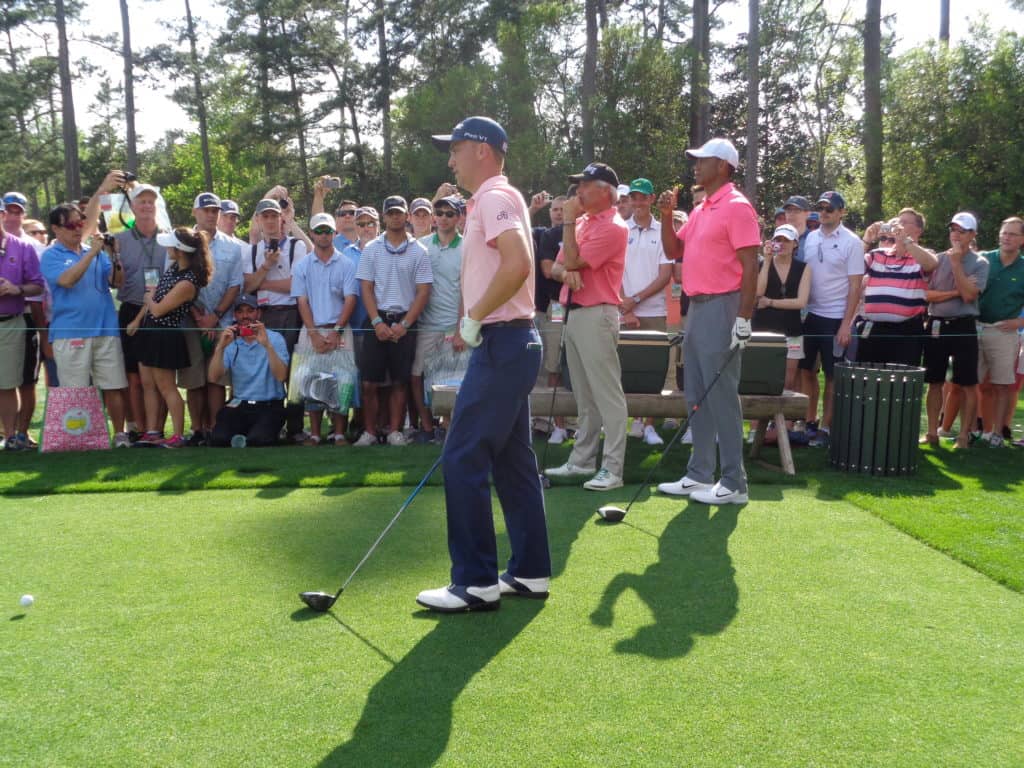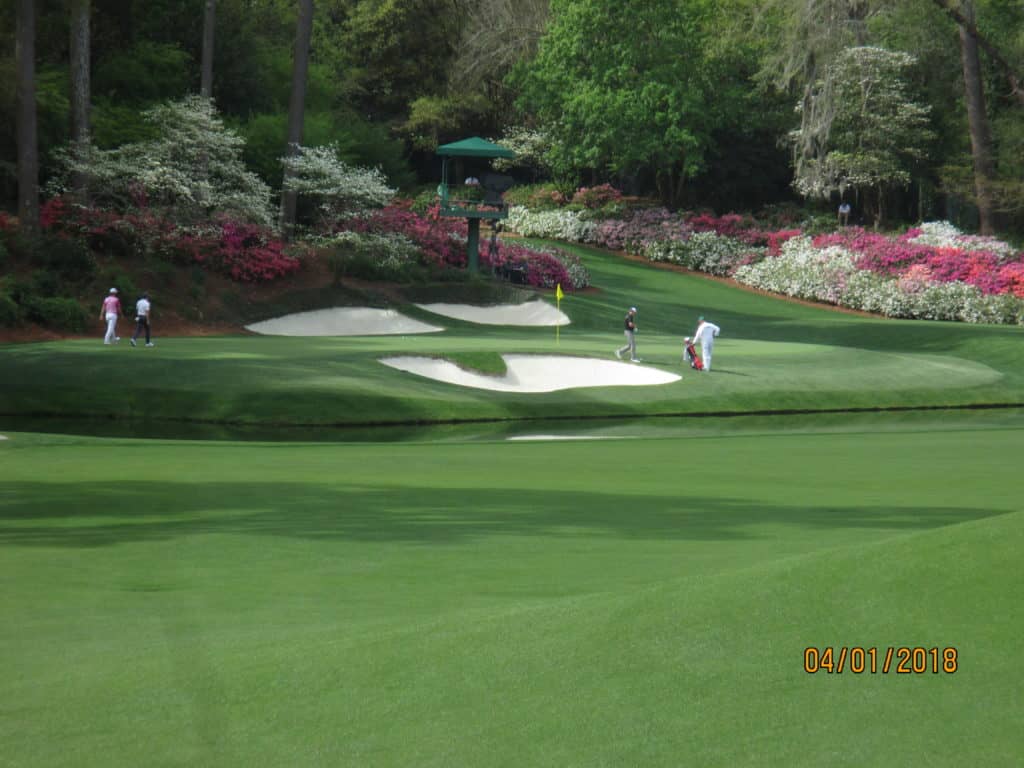Golf is a sport that is played to the side.
Much like baseball, tennis and other swing related sports, the athlete is standing to the side of the ball and isn’t directly behind it.
This can make alignment and aim difficult because of the way our vision as humans is designed.
In baseball the athlete has a wide space between the two foul lines in which he or she can hit the ball. Power and the angle of the hit are more important than the direction.
However, in our sport of golf, accuracy and hitting the ball down your intended start line is vital to your overall success. Meanwhile, distance and the quality of the strike remain vital as well.
In fact, we believe there are three keys to playing your best golf:
- Being able to control the low point (Results in quality ball striking)
- Being able to start the ball on your intended start line and controlling the curve.
- Having enough speed and distance to play the golf course.
Today, we focus on helping your with #2 above and answering the question of how to align your feet in the golf swing.

How To Align Your Feet in Golf (3 Keys)
The golfer has various options and will select the alignment of his or her feet based on the shot he or she is trying to hit. The golfer could play with an open stance, a closed stance, or a neutral stance.
Below, we will get into what stance and alignment the golfer will want to hit based on the shot they are trying to hit.
But first, let’s talk about a bad teaching point that is often used.
Swing Feet Alignment Myth: Align your feet like a railroad track. I don’t like this instructional point for several different reasons. First it doesn’t take into account the various shot shapes or a shot pattern that someone hits.
Second, it takes the visionary and reactionary components of the golf swing out of it and makes the golfer too robotic. Third, every golf round is a journey and golfers should start to read their shot patterns that day and adjust.
Key #1: Match Your Stance to the Desire Shot Shape
Upon arriving at a shot, the golfer will determine what shot he or she feels most comfortable hitting. Some golfers prefer to work the ball away from the danger, while others like to work it towards the danger on that hole. Rely on your vision and what your golf swing is doing that day and commit to a shot.
Some golfers only have one shaped shot and that is fine. Over time, golfers can work at the driving range on hitting slight fades or draws to become a great golfer. Even if you hit one shape 80-90% of the time, having the option to work the ball even 2-3 yards the other way can be a game changer for many golfers.
You can use an open stance or a closed stance to help eliminate one side of the golf course. Golf is not played on a perfectly squared course, so your stance doesn’t always have to be perfectly square. Use the angles and learn to eliminate one side of the course.
Here is a default stance for each shot you might be trying to hit:
- Open Stance: Used if you are trying to hit a fade.
- Closed Stance: Used if you are trying to hit a draw.
- Neutral Stance: Used if you are trying to hit a straight shot (the hardest shot in golf)
Keep in mind that the most difficult shot to hit in golf is often the straight shot. It takes a square clubface and a neutral swing path. This is little margin for error.
Instead, we promote playing a slight fade or draw and developing a stock shot (see Key #3 below).
So your next steps are to work on this at the driving range and imagine the different shots you play on a course and test out different stances and the direction your feet are aimed.
Quick Note – Famous Golfers who Used Open or Closed Stances
- Open Stance: Fred Couples, Lee Trevino
- Closed Stance: Sam Snead, Arnold Palmer

Key #2: Adjust to your Shot Patterns
Every golfer has a shot pattern even if they struggle to recognize it. I know that for many years my misses have been overdraws. This is a shot that draws too much from right to left. Prior to that I fought the pull shot.
My goal is to eventually tighten up my shot dispersion through practice, but when I get to the course to play the shape that I have that day and make minor adjustments but work on playing the golf course vs playing golf swing.
If you get an opportunity to hit at the range prior to your round, get loose and then hit some shots with a variety of clubs, take note of your shot pattern that day and play it.
Recently, I have played with a slightly open stance and have hit a push draw or fade with the driver, while I have hit with a slightly closed stance with the rons and have hit a slight pull draw.. This is where the slots have felt comfortable and I can keep the ball in play with the driver and have hit some quality irons shots with this swing pattern.
Make sure you enjoy the round and adjust during the round as needed. Minor tweaks in the alignment of your feet can help you eliminate one side of the course and fall into a shot pattern that helps you shoot quality scores.

Key #3: Develop a Stock Shot
Ultimately, we believe golfers should develop a stock shot that they can rely on under pressure. My stock shot is a slight draw that I can hit with an 80%, 90%, or 100% swing. While I can hit the fade, if the pressure is on and I need a shot, I am hitting the slight draw. It is comfortable, natural and I can count on it.
Here is a great stock shot drill you can use to help develop your go to shot:
- At the driving range, set up an alignment stick about 6-8 yards in front of you, straight down your target line.
- If you have a second alignment stick, set the stick 3-4 feet right of the first stick (for a draw) or left of the first stick (for a fade).
- Htih 10 shots and take note of your shot pattern.
Keep in mind the following (Ball Flight Laws)
- The golf ball will start primarily in the direction your club face is aiming at impact.
- The golf ball will then curve away from the swing path. For example, if your club face is 2 degrees open at impact with a swing path that is 4 degrees to the right, your shot will start right and draw left, resulting in a push draw.
- Another example: if your club face is 2 degrees closed with a swing path that is 4 degrees left, your shot will start left and fade right.

Next Steps: Take Action
Get to driving and start playing around with the different stances and feet alignment you can use in golf. Build your swing, own your swing and understand what minor adjustments you can make to control your ball flight and manage your way around the golf course.
Golf becomes really fun when you are playing certain angles, have a variety of shots and can execute the shot you are intending to hit! Keep working on your game and hit plenty of golf balls with intention!
I would highly recommend a launch monitor for instance feedback such as the following:
- Carry and Total Distance
- Ball Speed
- Launch Angle
- Spin Axis
- Spin Rate
Having this immediate feedback at the driving range, on the golf course or in a golf simulator setup in your garage is key to quicker improvement!
We would recommend the Skytrak or Mevo, two great entry level price points for quality feedback and data.
Related Posts:
I am an amateur golfer on a journey to get better, enjoy the game as often as possible and share my passion and knowledge with others. I have coached high school golfers at a high level and have a great passion for the game and want to give back. I enjoy learning about the golf swing and am currently studying to be a certified professional golf instructor. Join me in our journey to get better everyday.

